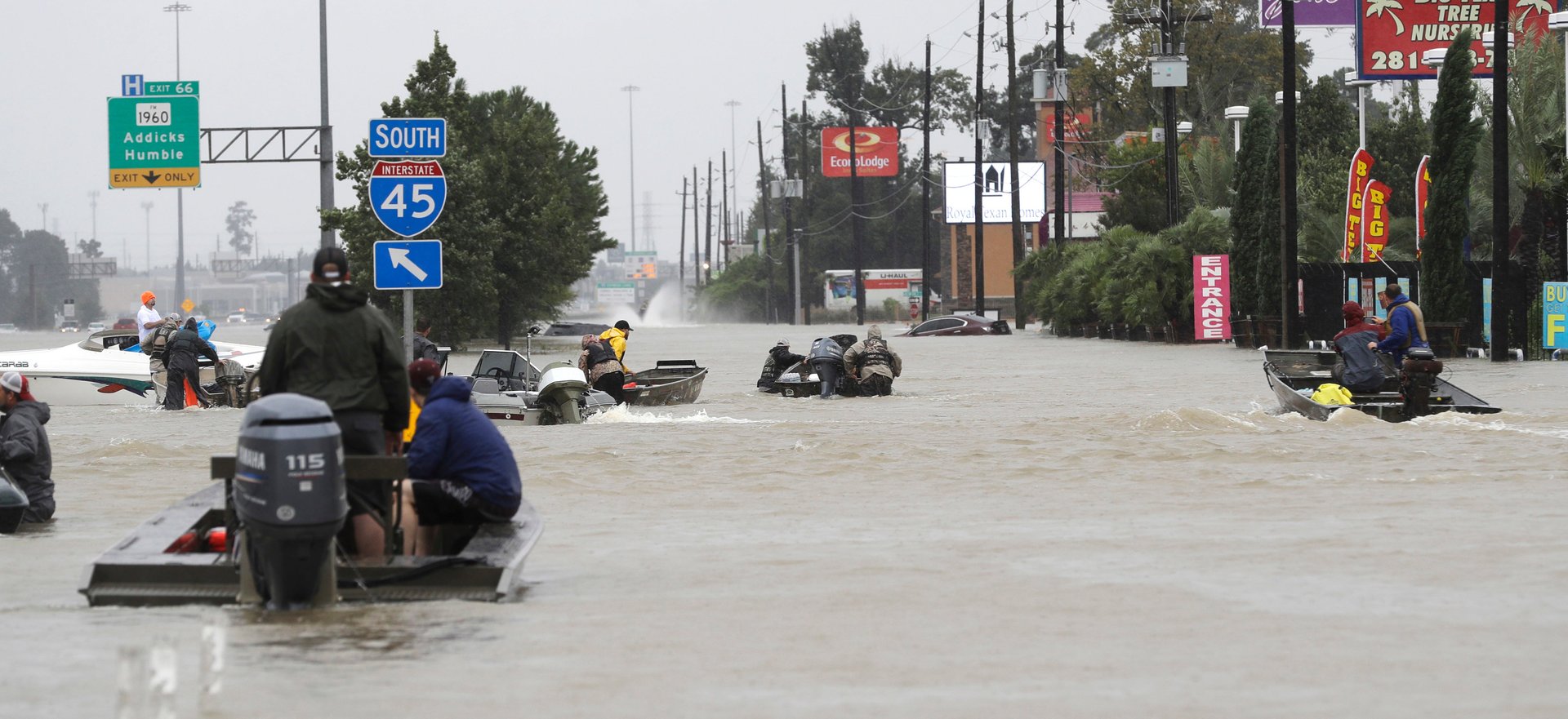The right way to volunteer to help Houston with Hurricane Harvey
With around 30,000 people expected to need emergency shelter because of Hurricane Harvey, the US government has clear guidelines for those wanting to help on the ground.


With around 30,000 people expected to need emergency shelter because of Hurricane Harvey, the US government has clear guidelines for those wanting to help on the ground.
Find a trusted non-profit
Volunteering in a disaster often requires training and definitely demands planning. Get in touch with local or national NGOs coordinating responses and they can work out where you’ll be most helpful.
The Federal Emergency Management Agency (FEMA) recommends:
- National Voluntary Organizations Active in Disaster (NVOAD)
- National & Community Service
- Citizen Corps
- Texas VOAD’s list of vetted local organizations
Do not self-deploy
People throwing themselves into the situation without going through a service organization can do more harm than good. As FEMA writes, “following a disaster, a community can become easily overwhelmed by the amount of generous people who want to help.”
Before doing anything, make sure it’s safe to go to volunteer sites and that they actually need you. If and when you are given a task, make sure you have safety gear.
Be patient
It’s human nature to want to help immediately. Actually, much of the most valuable help will be offered over a long time to come—and outside the glare of the national spotlight.
“Recovery lasts much longer than today,” FEMA writes. “There will be volunteer needs for many months, and years, after the disaster.”
Want to help immediately?
If there are no immediate voluntary needs, donate. Cash to known entities is the best and fastest way. At the moment, FEMA is asking people not to donate perishable food, clothes, or other household items—it can use up valuable time and resources to get rid of superfluous things.
Want more information?
Visit FEMA’s page on volunteering and donating responsibly and read its six-page guide (pdf).